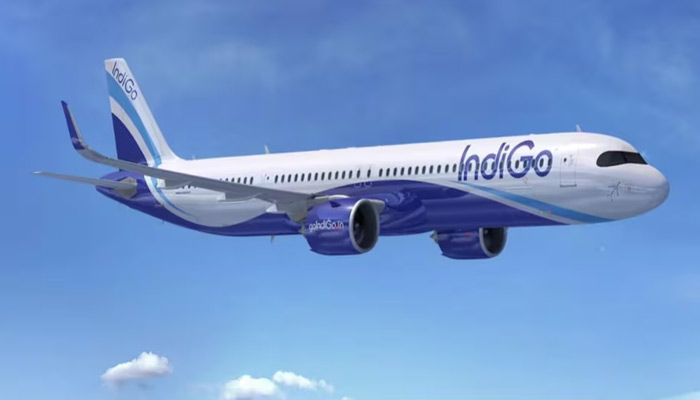The first hint of IndiGo’s widebody plans had come up in 2017. The airline expressed its interest to acquire the international business of Air India along with Air India Express.
A lot of water has flown under the bridge since then, including the fall of Jet Airways, the pandemic and the sale of Air India to the Tata group. One of the statements that co-founder Rakesh Gangwal said, “We are generally of the view that it makes fundamental economic sense for us to enter the long-haul, international market.” Gangwal is no longer a board member in IndiGo now after a fallout with co-founder Rahul Bhatia.
IndiGo – the country’s largest carrier, has “agreed” to place a firm order for 30 A350-900 aircraft with Airbus. The deliveries of the planes will commence in 2027, and the airline has an option for 70 more aircraft. The response from IndiGo was euphoric, while that from Airbus was measured. A typical agreement moves from MoU to actual signing of the deal, instead both IndiGo and Airbus have communicated this with the word “agreed”.
The airline, which started in 2006 and propagated its single fleet type strategy and its benefit, has since diversified into having multiple subtypes of the A320 family, the turboprop ATRs and now the wet leased operations with the widebody aircraft. All of which is a long way from the initial question – Will IndiGo ever take delivery of 100 aircraft?, which it had ordered at the Paris Air Show in 2005.
Dreams in place since 2017
IndiGo’s intention to express interest in international operations of Air India group made it very clear that the group has ambitions of going across the seven seas which the A320 family aircraft cannot help, even with the XLRs.
In December 2018, it signed its first codeshare agreement which was with Turkish Airlines. While the airline has gone from strength to strength with that codeshare, it has also partnered with others like Qatar Airways, American Airlines, Air France, KLM, British Airways, Virgin Atlantic, Qantas and Jetstar.
The next frontier was always going to be having a franchise model in another country on the lines of AirAsia or Lion Air groups or moving towards the widebody. With ATR and Airbus narrow-body aircraft, there are limited new stations that the airline can launch within India, and the large order book is more than enough to cater to the neighbourhood within the flying distance of the A320neo family, including the XLR.
Competing with Air India?
The airline is competing against itself and not exactly against Air India. However, it will definitely try to take the second mover advantage on routes which have matured for Air India and are growing. The obvious choices would definitely be London, but 30 planes would mean everything from Australia to Europe and North America – which the range of A350-900s allows, depending on the configuration which the airline chooses.
Considering that the airline wanted to bid for the international operations of Air India, the widebody is not an afterthought to take on Air India, but it is just an incidental thing that would happen. Either way, IndiGo would lose the market leadership to Air India in the international segment after the merger of Vistara with Air India. Over 2030 and beyond, this move by IndiGo seems to aim towards a total leadership – both domestic and international.
Widebody and LCC – unproven combination yet
Low-Cost Carriers inducting widebody aircraft have not resulted in great results thus far. From Wow Air to Norwegian – there have been a lot of skeletons. Some of the biggest carriers, like Ryanair and Easyjet, have stayed away from this and stuck to a single fleet type for ages.
Closer home though AirAsia, with its subsidiary AirAsiaX as well as Cebu Pacific, VietJet and Lion Air have been operating widebody aircraft. Not all of them are successful, with AirAsia X having seen closure in Indonesia and severe headwinds in its home market.
India, as always, is different. The sheer volume of passengers is huge as compared to other countries in the region except China, and currently, the volume is dependent on foreign carriers to a large extent.
Mixed terminals a challenge
International traffic from and to India has largely been via the hubs of Delhi and Mumbai.
The airports at Delhi and Mumbai from where the majority of the international traffic flows are divided into three terminals in case of Delhi and two at Mumbai. With the plans for these terminals being laid out when the full-service carriers ruled the roost in India, things have changed drastically since then, with LCCs having a share of 80%. This has meant that airports have one international terminal which is co-occupied with full service domestic carriers while LCCs operatore from the older terminals.
Over the years, the growth of LCCs has meant that IndiGo now carries more passengers from and to India than Air India, but IndiGo’s international and domestic operations are split, unlike that of Air India. With Bengaluru shifting international operations to T2 on Aug 31, 2023, along with all full-service domestic carriers, the problem of Delhi and Mumbai will be replicated at Bengaluru for IndiGo. Ironically, IndiGo has more seats to offer on international flights from Bengaluru than Air India, even when Air India has its flagship non-stop to San Francisco.
The transfer times between two terminals could make the proposition challenging for IndiGo, unless it has assurances of same terminal operations being possible by the time its widebody aircraft arrive.

